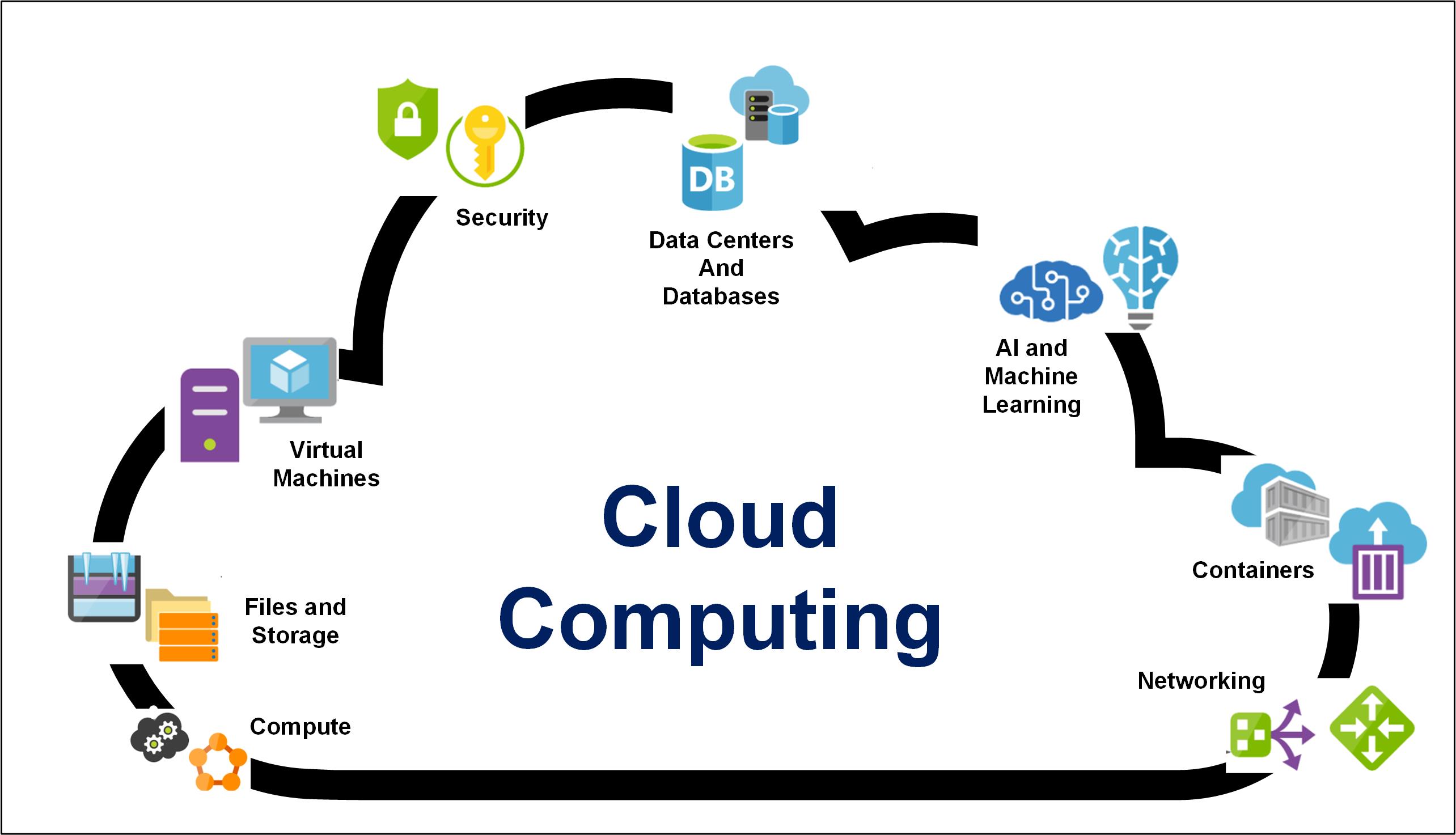A Brief History of the Cloud
The concept of ‘cloud computing’ originated in the 1950s

Cloud architectures may include a few definitions that surround the overall concept of what the “cloud” is as well as “when” or “how” it began. Some have conveyed the expression that “the cloud is really only somebody else’s computer,” which may be a bit shy of reality and more of a tongue in cheek colloquialism. According to the Journal of Accountancy and IBM, the concept of “cloud computing” first arose in the 1950s in the form of dumb terminals connecting to a mainframe computer.
We hear more of the term “cloud computing,” which is mostly related to cloud as a service, and not an architecture. The term “cloud computing” was coined within a 1996 Compaq Computer Corp.’s internal document (by George Favaloro), with the term “cloud” originally linked to the concept of “distributed computing.” In May 1997, Sean O’Sullivan of NetCentric, attempted to trademark the phrase “cloud computing,” but abandoned that effort in April 1999. The term went mainstream at Apple-spawned software and electronics company General Magic in the early 1990s, with even earlier mentions in academic work before that.
The ”where” of the term is purported to be when the British computer scientist Christopher Strachey (National Research Development Corp., London) published an academic paper at the International Conference on Information Processing, which was also about the shared use of mainframes, called “Time Sharing in Large Fast Computers” (1959-06-15) available for download at archive.org. The paper covered several of the initial issues that had to be addressed in the very early stages of compute processing and operations.
When it comes to the origin of cloud computing, the public generally believes that Eric Schmidt, the former CEO of Google, was the first proponent of the concept when on August 9, 2006, at the Search Engine Conference (SES San Jose 2006), he proposed the concept of “Cloud Computing.” In its early stages, circa late 1990s, the cloud was used to express “the empty space between the end user and the provider,” per a brief “History of Cloud Computing” by Keith D. (Foote 2021-12-17). Additionally, Professor Ramnath Chellapa of Emory University defined cloud computing in 1997 as the new “computing paradigm, where the boundaries of computing will be determined by economic rationale, rather than technical limits alone.”
Not Fully Defined
As mentioned earlier, in its simplest of terms, the cloud (operations-wise) is truly the “use of someone else’s computer.” As the evolution evolved into the early 2000s, five key cloud characteristics emerged: on-demand self-service, broad network access, resource pooling, rapid elasticity and measured service. Industry-recognized companies and other authors have also concluded that “a [cloud] solution must exhibit these five characteristics to be considered a true cloud solution.”
This doesn’t mean it must possess all five characteristics, however, some or more of these topics are anticipated in some structure to represent cloud and cloud computing. A graphic depiction of services in a cloud computing environment is shown in Fig. 1.

Cloud Deployment Models
We have further established that there are four familiar types of cloud deployment models: public, private, community and hybrid; each quite similar but separated by who or what entity provides those services. NIST also defines these four cloud deployment models according to where the infrastructure for the deployment resides and who has control over that infrastructure.
Deciding which deployment model you will engage is one of the most important cloud deployment decisions you will make. Cloud deployment models satisfy different organizational needs, so it’s important that you choose the right model to satisfy the needs of your organization.
Most important is that each cloud deployment model has a different value proposition and different costs associated with it. In many cases, the choice of a cloud deployment model may simply come down to economics.
Private Popularity
Although initiated in the 2008-timeframe, “private clouds” were still undeveloped and not very popular—but public opinion began to change once companies like AWS and Microsoft solved many of the public’s security concerns.
Hybrid clouds began to pop up around 2011—a concept that required an interoperability model be established, which allowed private and public clouds to shift workloads between two (or more) clouds. Business systems lacked the ability to accomplish this until the now ubiquitous three structures—created in part and recognized by Oracle Cloud in 2012—created Software as a Service (Saas), Platform as a Service (PaaS) and Infrastructure as a Service (IaaS) foundations that nearly all clouds employ for their functionality in part or in whole.
Multi-clouds arose once organizations began as SaaS-developed services such as HR and CRMs, and supply chain management became optimized for cloud services around mid-2010–2020. Multi-cloud let users select the best-of-breed cloud to perform specific services while allowing those independent clouds the ability to interchange data and operational solutions among each other.
Developer-Driven
Cloud began to shift from developer-friendly to developer-driven practices around the 2016-time frame. Application developers started to take realistic advantage of the cloud because of the tools the cloud had available.
Services strive to be developer-friendly to draw more customers. Realizing the need, and the potential for profit, cloud vendors developed (and continue to develop) the tools apps developers want and need. Practices that include containers (e.g., Docker, Kubernetes and other open-source capabilities) are driving the resource-needs capabilities, which all clouds—irrespective of the structures—are moving toward.
Applications and Resources
Many are familiar with cloud-computing resources, yet it sometimes comes with the uncertain knowledge of “what” those resources are. Essentially, cloud computing is “a method of delivering computing resources.” First, those evolving cloud-computing services supported the needs for data storage and processing, and eventually moved on to software. Cloud-computing business systems, such as Customer Relationship Management (CRM), have become available instantly and on demand—changing the dimensions of those services traditionally dedicated to mainframe-like computing or application-specific packages provided by Oracle and others in their heyday.
These low-cost-of-ownership models for cloud computing have gotten lots of attention and are seeing increasing global investment. In times of financial and economic hardship, this approach becomes more affordable on a OpEx (pay-as-you-go) model instead of up-front investing in hardware (CapEx) and fixed-priced applications that strain budgets and become valueless as technology capabilities increase.
From a generalized perspective, cloud computing provides users with implementation agility, lower capital expenditure, location independence, resource pooling, broad network access, reliability, scalability, elasticity and ease of maintenance. Each of these topics will play differently into your business needs. And similar perspectives can be applied to entertainment-based media from an operations (or OpEx) model, but will generally be applied with differing practices and payloads (i.e., media content and not monetary hardware-centric considerations).
Get the TV Tech Newsletter
The professional video industry's #1 source for news, trends and product and tech information. Sign up below.

Karl Paulsen recently retired as a CTO and has regularly contributed to TV Tech on topics related to media, networking, workflow, cloud and systemization for the media and entertainment industry. He is a SMPTE Fellow with more than 50 years of engineering and managerial experience in commercial TV and radio broadcasting. For over 25 years he has written on featured topics in TV Tech magazine—penning the magazine’s “Storage and Media Technologies” and “Cloudspotter’s Journal” columns.
